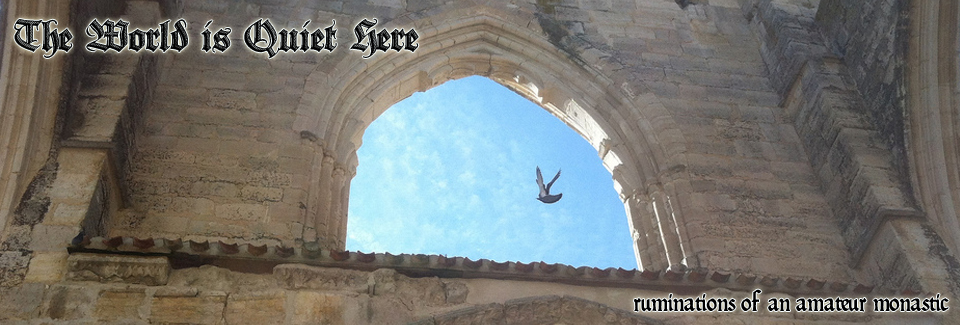The Extraordinary Form and Mutual Enrichment


This morning for the first time I served at a public Mass in the Extraordinary Form of the Roman Rite. It was a votive Mass of Saint Joseph, celebrated at Saint Joseph church in Tacoma by the Rev. Caleb Insco, F.S.S.P.
This is only the second time I’ve served at the Vetus Ordo, and I was extremely nervous. Throughout the Mass, I tightly clutched my “cheat sheet” pamphlet, which contains all of my notes and assorted doodles and diagrams about where to stand and what to do. My memorization of the Latin is still pretty terrible, and my memory for cues during the Mass is even worse.
Father Insco, however, was very gracious, and he helped me through. I really only flubbed up twice, both minor matters. Well, three if you count remembering to extinguish the altar candles only after I had already divested.
I’m extremely grateful to Father, both for teaching me to serve and for allowing me to serve despite my faults and limitations.
Will this be a regular occurrence? Who knows? There is so much I have yet to learn about this venerable rite.
I will say this: serving the Vetus Ordo is certainly affecting the way I serve the Novus Ordo, and to the good. Recently while re-reading the General Instruction of the Roman Missal1, I was struck by something that sort of bowled me over.
The gestures and bodily posture of both the Priest, the Deacon, and the ministers, and also of the people, must be conducive to making the entire celebration resplendent with beauty and noble simplicity… Attention must therefore be paid to what is determined by this General Instruction and by the traditional practice of the Roman Rite and to what serves the common spiritual good of the People of God, rather than private inclination or arbitrary choice.
(General Instruction of the Roman Missal,
2003 rev./2011 trans., paragraph 42, emphasis mine.)
After reading this, I double-checked with People More Knowledgeable Than Me™ and asked if this meant what I thought it meant. The rubrics of the modern Roman Rite tend to be a little loosey-goosey, and here I was suddenly wondering if this might not be the hermeneutic key for understanding how the Rite was supposed to be served.
Part of the issue with the GIRM is that it has been revised several times (most recently in 2003), and even the most recent version has had its English translation revised at least once2 So even if everybody is looking at the same instruction, there’s no guarantee that they’re all reading the same thing.
Nevertheless, this is the most recent published version and also the version on the Vatican website.
 And yes, it was saying exactly what I thought it said. Servers should be doing the same gestures they had always done in the Roman Rite, provided they didn’t contradict the GIRM. Unless, as one of my knowledgeable friends pointed out, the gesture in question had been specifically abolished by some other piece of legislation.
And yes, it was saying exactly what I thought it said. Servers should be doing the same gestures they had always done in the Roman Rite, provided they didn’t contradict the GIRM. Unless, as one of my knowledgeable friends pointed out, the gesture in question had been specifically abolished by some other piece of legislation.
There followed a long digression through the plethora of documents on the liturgy. I did find a few things3, but they were relatively few in number or scope. This really isn’t all that surprising. Post-conciliar instructions regarding Altar Servers are virtually nonexistent, and rubrics for them in the Roman Missal are maddeningly vague.
So beginning with last weekend’s Solemnity of Christ the King, we’ve begun adding more of those traditional gestures by the Altar Servers back into the Mass at our Ordinary Form Masses at Holy Rosary.
I believe that this is what the GIRM intends, and I like to think that this is in part what Pope Benedict XVI meant when he said “the two Forms of the usage of the Roman Rite can be mutually enriching”4.
And I believe Dom Matthew would be pleased.
(Thanks to Francine for the photos!)
- Unfortunately abbreviated as GIRM.
- In 2011 in conjunction with the English translation of the Third Typical Edition of the Roman Missal.
- E.g. Inter Oecumenici (1964) states “kissing of the hand and of objects presented or received shall be omitted”.
- Letter accompanying Summorum Pontificum, 2007

